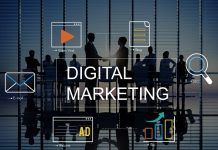You’ve got a small team, tight deadlines, and big targets. Sound familiar? In the B2B world, marketers are often juggling multiple campaigns while trying to keep sales in sync and leads flowing steadily through the funnel. It’s a lot. And when manual processes start slowing things down, that’s when B2B marketing automation tools can feel like a lifeline.
These tools aren’t just about saving time—they help you connect with prospects in meaningful ways, scale personalization, and prove your impact with hard numbers. But with so many platforms popping up, changing features, and the ever-present challenge of integration, how do you know what’s right for your team?
In this blog, we break down what’s trending, what works, and what to watch out for—so you can confidently build a marketing automation strategy that delivers results.
Why B2B Marketing Automation Tools Matter
Unlike B2C, B2B marketing involves longer sales cycles, multiple decision-makers, and complex buying journeys. Automation helps by:
- Streamlining lead capture and nurturing
- Delivering personalized messaging at scale
- Aligning marketing and sales through shared data
- Improving campaign tracking and marketing ROI
According to a report by Invesp, businesses that use marketing automation to nurture leads experience a 451% increase in qualified leads.
Emerging Platforms in B2B Marketing Automation
While tools like HubSpot, Marketo, and Pardot remain industry staples, several emerging platforms are shaking up the space:
1. ActiveCampaign
Ideal for small to mid-sized B2B firms, it offers advanced email automation, CRM integration, and lead scoring.
2. Autopilot by Ortto
Visual journey mapping and multichannel capabilities make it a go-to for teams focused on lifecycle marketing.
3. SharpSpring (by Constant Contact)
Offers full-featured automation with built-in CRM, behavioral tracking, and agency-friendly features.
4. User.com
Combines marketing, support, and sales automation into one platform—particularly useful for SaaS and tech B2B businesses.
Tip: When choosing a tool, evaluate how well it integrates with your CRM, ERP, and analytics platforms.
Best Practices for B2B Marketing Automation
1. Define Clear Workflows and Buyer Journeys
Before jumping into automation, map out your customer journey and define triggers, segmentation criteria, and lead stages.
2. Start Small and Scale
Focus on automating high-impact areas first, such as:
- Welcome emails
- Lead scoring and routing
- Abandoned cart or form follow-ups
- Drip campaigns based on behavior
3. Ensure Sales and Marketing Alignment
Use automation to create visibility across teams. Sync lead scoring models, establish SLAs for follow-ups, and maintain a shared dashboard.
4. Regularly Clean and Segment Your Lists
Automation works best with clean, segmented data. Regularly update your contact database to remove duplicates, inactive leads, and outdated info.
5. Test, Measure, Optimize
Use A/B testing on subject lines, CTAs, and content. Track KPIs such as:
- Email open/click-through rates
- MQL to SQL conversion rates
- Campaign ROI
- Customer acquisition cost (CAC)
Integration Tips: Making Tools Work Together
The real power of marketing automation lies in integration. B2B businesses often use multiple tools for CRM, content, analytics, and ads. Ensure your automation platform can:
- Seamlessly connect with CRMs like Salesforce, Zoho, or Microsoft Dynamics
- Push and pull data from your website, email tool, and ad platforms
- Sync with analytics tools (like Google Analytics or Tableau) for reporting
- Enable lead handovers between marketing and sales in real-time
Pro Tip: Use integration platforms like Zapier, Workato, or native APIs to connect your stack efficiently.
Modeling ROI for B2B Marketing Automation
Demonstrating ROI is key to justifying marketing automation investments.
Metrics to track:
- Cost per Lead (CPL) before and after automation
- Marketing Qualified Leads (MQLs) generated through automated campaigns
- Sales Cycle Duration – How much faster are leads converting?
- Customer Lifetime Value (CLTV) is impacted by better engagement
Example ROI Model:
If an email campaign costs $1,000/month and generates 100 leads/month with a 5% conversion rate and an average deal size of $5,000, the return would be:
- $25,000 in revenue for $1,000 spend → ROI = 2400%
Example
A mid-sized B2B cybersecurity company implemented HubSpot to automate lead nurturing, sales alignment, and performance tracking. By creating behavior-based email workflows and syncing with their Salesforce CRM, they reduced manual data entry by 60% and increased lead-to-opportunity conversion by 35% in just 90 days.
Key Takeaways from Their Strategy:
- Mapped the buyer journey to content touchpoints
- Automated MQL qualification and hand-off
- Used predictive lead scoring to prioritize follow-ups
- Measured pipeline velocity weekly to fine-tune efforts
Conclusion
B2B marketing automation tools have become essential in the modern marketer’s toolkit. They not only save time but also unlock opportunities for deeper engagement, improved lead quality, and stronger sales alignment.
Whether you’re starting from scratch or upgrading your current stack, focus on selecting tools that align with your business goals, integrate well with your ecosystem, and offer measurable outcomes. And most importantly, never stop optimizing—because the more you refine, the better your results.









